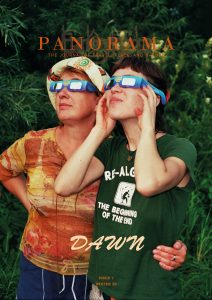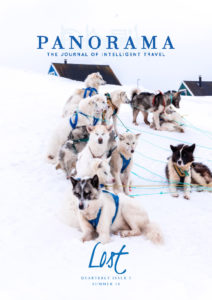My favourite spot to clear my mind has to be Rose Hill Cemetery. The cemetery is atop a small hill surrounded by an old familiar neighbourhood. It’s almost out of place, and very easy to miss, even in a small town like Spearfish, South Dakota. Unlike most, Rose Hill rises above old rooftops, looking over the southern section of town, backed against the front door of Northern Black Hills. Time spent here by myself is a time of deep reflection from the surrounding death, neatly sectioned by cold stones, dirt roads, and green grass. I often spend moments sitting on the cemetery bench, towards the bottom edge of the cemetery, looking towards the life in the hills. Or the views in the night sky, while dead strangers lay in a garden of romance at my back.
“[Cemeteries] allow us to achieve a better understanding of ourselves–what we are, what we have been, and, perhaps what we are in the process of becoming.” Richard Morris’s essay Death on Display, expresses the natural and unnatural attractions of graveyards, produced from a specific design of visuals, and how those attractions affect public rhetorics of display among cemeteries. Morris categorises grave sites into three different types–Memento Mori, A Garden of Romance, and Epic Heroism/Lawn Cemeteries–and discusses visuals in each type of graveyard and the affects on both the dead and living.
Memento Mori (“remember death”) grave yards are those of the past, featuring ravaged conditions of landscape and up-healed tombstones. Memorials in this type of graveyard, two to five inches thick and one to five feet tall, speak to the viewer in memorial epitaphs of “remembering death, for the time of judgement is at hand.” Visuals of decay and an overall hostility of memento mori, produce a convenient environment to dispose of the dead; purpose themselves as a place to envy the dead; remind the living that immortality is only achieved among the dead that lay here. In short, cemeteries of the past convey this eerie thought: “this world is not to our abiding place,” but the afterlife is.
A garden of romance, explained by Richard Morris, has an entirely different voice and set of values from that of past graveyards. A place to “celebrate the emotionality, unity, and beauty of death…engaged with natural processes.” Sights of death icons are replaced with nature and art icons. This type of cemetery focuses on creating a romantic experience of/from death through nature and is specifically motivated towards its viewers. Epitaphs in graveyards under this category of memorials, substitute “remember death” with “In memory of”. To create a new form of ethos among newer cemeteries, which start from “aesthetic appealing objects” like works of art entailing Roman or Egyptian influence, under evenly spread shade, and outlined by exotic hedges.
Richard Morris terms these aesthetic objects as, “pathetically evocative works of art” in modernised cemeteries. Morris insinuates the expensive display of art among tombstones creates a social hierarchy in graveyards. One’s grave site featuring large works of art may implore a higher social status, and he claims, “they had given lot owners too much latitude in developing their lots.” One may see the difference of lots as a direct connection towards the already imposed and encouraged individualistic parts of life. The real hierarchy derives from the whole of the cemetery itself and its layout. With select opportunities to bury a fallen loved one in premium locations–next to easy-to-acsess pathways or in family lots–as if I am buying front-row tickets to the worst concert of my life. Modern-style cemeteries enclosed in outlines of iron fences and gated entries create a physical separation, which in turn, creates a privilege of status to be put to rest in places like gardens of romance. Here, a true reason of social hierarchy in cemeteries is found.
Rose Hill has a unique characteristic of nature unlike those depicted in Richard Moriss’s essay. As a modern cemetery, Rose Hill has a gate stapled with a coat of arms, and bare wooden fences encircling its grounds. Atypically a modern garden of romance, Rose Hill Cemetery protrudes on top of a hill and exposes one’s view to surrounding bouts of organic nature, not hindered by its gates or fences.
All the effort people put into making cemeteries ornamental and domestic seems like the cocooning fake smile drawn on a sad clown. I see no interest in a place that is derived from memento mori, where the dead are more welcomed than the living. I do not belong to a place where resting death is to be only purposed for either the living or dead. Having no memory of walking through grave sites to greet an eternal relative, I feel no connection to any site of buried death. Not one family member has had a funeral with a priest and a casket, in a graveyard showcasing weeping grown men.
So I sit on a Rose Hill bench facing away from thoughts of remembering death and the domesticated man-made nature. Here I find my middle ground. I face away to gaze my eyes on the real display of nature within the belly of the Black Hills; my back to the unnatural, utopian garden features. I turn away from the culture of memorialising death memento mori embodies, and open my thoughts to the endless possibilities of life hiding among the stars. A bench on Rose Hill Cemetery is the new golden mean of incorporating raw authentic nature to aid the purpose in the memorialization of cemeteries and remains separate from other purposes that create cemeteries like that of memento mori and gardens of romance.











